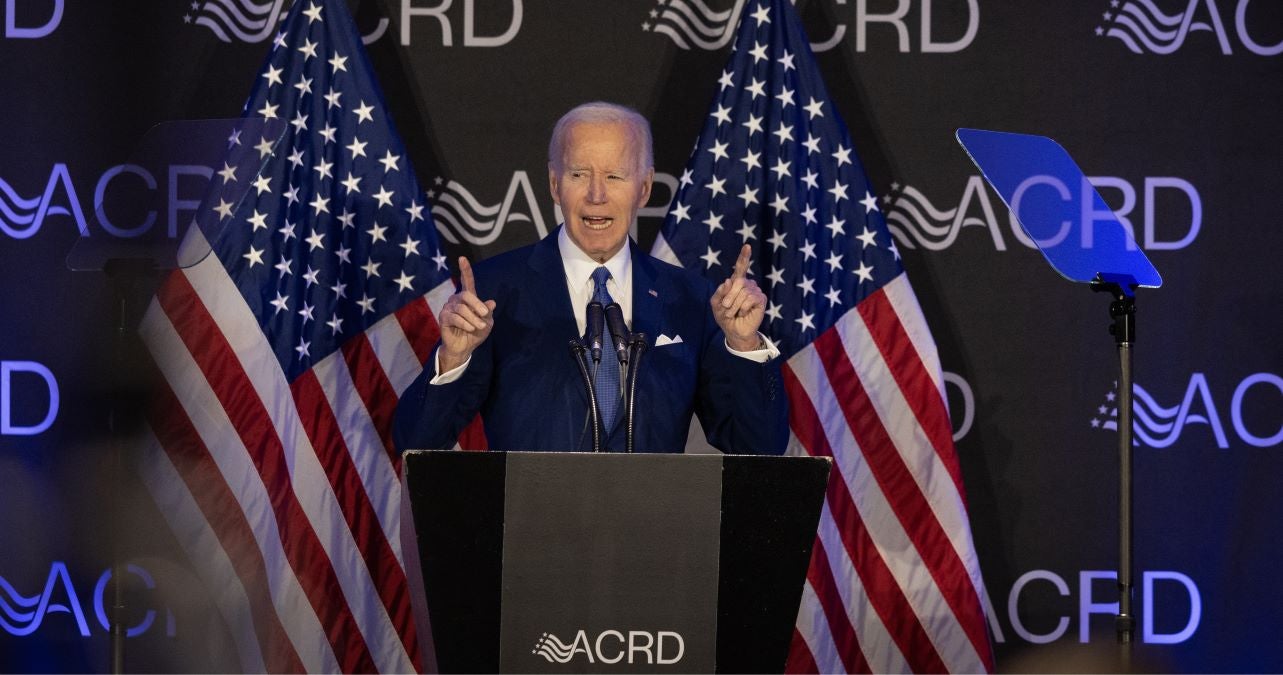Conclave frontrunner Cardinal Aveline redefines evangelization as ‘dialogue’ – LifeSite
Part I: Cardinal Aveline is rumored to be the next pope. But is he Catholic?
Part II: Francis’ ‘favorite’ Cardinal Aveline and his subversion of Christ’s role as mediator
(LifeSiteNews) — Cardinal Jean-Marc Aveline, the new president of the French Bishops’ Conference, is rumored to be the favorite to succeed Francis in the next conclave.
Vatican insiders have told LifeSiteNews that Aveline “will be the next pope,” and Edward Pentin and Diana Montagna’s Cardinalium Collegii Recensio states that he is “allegedly Pope Francis’ ‘favorite’ cardinal to succeed him.”[1] As such, presenting his ideas and theological approach is a pressing concern.
I. AVELINE’S THEOLOGICAL SYNTHESIS
In the first two parts of this series, we explored the ways in which he systematically subverts Catholic doctrine—recasting salvation, faith, Christ’s mediation, and the Church’s mission through a modernist lens.
His method is not to deny Catholic teaching outright. It is to hollow out the truths of the Catholic religion—retaining Catholic terminology, while substituting the sense of dogma and settled doctrine with new ideas.
He achieves this through the now-familiar technique of problematization, as seen in his treatment of salvation and “christic mediation.” Rather than confronting traditional doctrines directly, he artificially casts them as sources of unresolved tension, which can only be resolved by reconfiguring their traditional interpretations.
Instead of receiving the deposit of faith—completed with the death of the last Apostle—Aveline elevates contemporary phenomena such as religious pluralism, treating them as if they were sources of ongoing revelation. He constructs a theology around them, without proper regard for what God has already revealed.
The absurdity of this approach becomes obvious if we substitute a “problem” like religious pluralism with another phenomenon—such as physical disease. Aveline’s problematizing approach would disregard what revelation teaches about disease—e.g., that it is a consequence of original sin, tolerated for a greater good—and would invent a new “theology of disease” ex nihilo. It would pass silently over what was once known with certainty, and refraining from even teaching that disease is an evil to be cured.
This is the same maneuver Aveline applies throughout his work: the phenomenon of religious pluralism becomes a “mystery” to be celebrated; the dogma extra Ecclesiam nulla salus becomes a problematic slogan to be re-contextualized; Christ’s unique mediation becomes the means by which other religions enjoy a “salvific or revelatory value.”[2]
Just as Judas betrayed Christ, and the crowd chose Barabbas as their naturalist Messias in his place, so too does Aveline reject Christ’s universal mediation in favor of an utterly naturalist conception of religion:
Basically, religions are ways for men and women to seek answers to the great, simple questions of life. It’s better to have a religion that helps you, that doesn’t give you answers to questions you don’t ask yourself, but that helps you to truly experience life – that’s the most important thing.[3]
As St. John the Apostle wrote:
And every spirit that dissolveth Jesus is not of God. (1 John 4.3)
In this part we will see that Aveline’s logic reaches this very endpoint, with the Church—her identity, her mission, and her divine commission—being problematized and reimagined in light of religious diversity.
II. DIALOGUE AND THE MISSION OF THE CHURCH
Aveline’s pseudo-theological trajectory
Aveline’s theological project rests on three interlocking claims:
- The positive role of non-Catholic religions[4]
- The universality of “christic mediation”[5]
- The “dialogical foundation” of the Church[6]
This third claim is the focus of the present part, which shall consider this additional route by which Aveline dissolves the Catholic religion.
Given the centrality of interreligious dialogue to Aveline’s career—and to the wider revolution in modern theology—this section necessarily builds on the arguments made so far, and is longer than previous parts.
However, we should be clear. Aveline’s ideas are actually the operative principles of the self-styled “Conciliar/Synodal Church” today. They form the scaffolding for the new pseudo-theology that has taken hold—especially in the words and gestures of Francis himself, such as:
- His 2016 remarks rejecting “proselytism” as “the strongest poison.”[7]
- The 2019 Abu Dhabi Declaration, claiming that “the pluralism and diversity of religions [is] willed by God.”[8]
- His September 2024 statement in Singapore, that “all religions are a path to reach God.”[9]
Each of these moments reflects the same underlying thesis, expressed by Aveline: that the Church’s mission is no longer defined by proclamation and conversion, but by dialogue.
It is this third and final pillar—Aveline’s claim that the Church’s mission has a “dialogic foundation”—that brings his system to its theological conclusion. Dialogue is no longer a method or disposition. It becomes the very structure of the Church’s identity, a quasi-sacrament that redefines her relation to the world—and erases the urgency of conversion.
This results in the dissolution, not only of several dogmas of the Catholic religion, but of the purpose of religion itself.
What is the mission of the Church?
Before we consider the nature of dialogue, let us begin by defining what is meant by the mission of the Church.
The word mission refers to an assignment, entrusted to someone sent by a superior authority.
In the case of the Church, it is a dogma of divine faith (de fide) that Christ, in his incarnation, received a mission from the Father to redeem mankind—and that he entrusted this same mission to the Apostles, including St. Paul.[10]
This mission encompasses all the Church’s activities. Sometimes it refers narrowly to missionary or evangelical work: proclaiming the Gospel and winning souls for Christ. But such efforts are simply particular expressions of the broader reality. As Pope Pius XI taught in 1926:
[T]he especial care and solicitude of the Roman Pontiffs have [ever] been directed to the end that they, undeterred by difficulties and obstacles, might spread the light of the Gospel and the benefits of Christian culture and civilization to the peoples who ‘sat in darkness and in the shadow of death.’
The Church has no other reason for existence than, by developing the Kingdom of Christ on earth, to make mankind participate in the effects of His saving Redemption.
[The Roman Pontiff] fails in his special duty and obligations if he does not strive by might and main to win over and to join to Christ all who are still without the Fold.[11]
This mission is exercised through the Church’s threefold office: teaching (by authoritatively proposing revealed truth), ruling (by directing men in faith and morals), and sanctifying (by uniting them to God through sacred rites and the sacraments). Pius XII described this as “the fundamental law of the whole Church.”[12]
This is the true foundation of the Church’s mission: divine commission, apostolic succession, and a supernatural end—the salvation of souls. It is not a cultural dialogue, a mutual exchange, or a collaborative search for meaning.
With this in view, we can now consider the term dialogue, and examine how far—if at all—it can serve as the foundation for the Church’s mission.
What is meant by ‘dialogue’ in the modern context?
The word “dialogue” is of Greek origin, referring to a conversation or discussion between two or more parties.
But when modern churchmen speak of dialogue, they do not simply use the term in its ordinary or classical sense. Their meaning must be understood through the lens of recent Vatican documents and theological trends.
The term began appearing in Vatican documents roughly sixty years ago. It was there defined as follows:
[Dialogue] means not only discussion, but also includes all positive and constructive interreligious relations with individuals and communities of other faiths which are directed at mutual understanding and enrichment. […]
There is, as well, the dialogue in which Christians meet the followers of other religious traditions in order to walk together towards truth and to work together in projects of common concern.[13]
This definition is decisive. Dialogue is not presented as a pedagogical tool or a rhetorical method, employed for the sake of evangelization. It is presented as a form of religious engagement that presupposes enrichment on both sides, and a journey towards truth together.
This idea of progressing towards truth is also applied not just to individual Christians,[14] but also to the Church herself.[15]
The implications are profound. If the Church herself is said to walk towards truth in these encounters, then the very nature of revelation is subtly but unmistakably recast. The Church is no longer the divinely-instituted teacher, ruler, and sanctifier of nations. She becomes instead “the universal sacrament of salvation” and “the living sign of love”[16]—a body defined not by her doctrinal claims, but by her role in relational exchange.
Given that “dialogue” is presented as being based on the Church as a “sacrament,” and as a means by which God acts in the world, it takes on a quasi-sacramental character. It is treated not as a means to conversion, but as a theological act—almost a ritual act—in which God is said to act through reciprocal understanding.
But such an approach necessarily entails a posture of equality[17] between the Church and false religions, and between Catholic faith and non-Catholic “belief.” This equality can only be maintained in one of two ways: either by renouncing the Church’s claim to possess the fullness of revealed truth, or by feigning uncertainty—a “methodological doubt”—in which Catholics pretend not to know what they in fact must affirm with divine faith.
Both options are indefensible. The former is apostasy. The latter is dishonest.
In either case, the Church is stripped of her rightful identity as Mater et Magistra—Mother and Mistress of all the faithful. She is no longer the authoritative bearer of truth, but merely one voice among many in a conversation she no longer leads.
Given all this, can dialogue serve as a foundation for the Church?
The Church’s ‘dialogical foundation’
Aveline makes the following claim in his 2006 essay Evolution of Issues in the Theology of Religions:
Finally, the Catholic magisterium affirms that the Church’s mission, as ‘the universal sacrament of salvation’ brought by Christ, has itself a dialogical foundation.
It is because God, in his revelation, took the initiative, as Paul VI said, to establish a ‘dialogue’ with humanity, that the Church is obliged to engage in an authentic ‘dialogue of salvation’ with every person, including (but not exclusively) with believers of other religions.[18]
He presents this modern understanding of dialogue as a deeper understanding of Catholic teaching—but in reality, it is a redefinition. Dialogue is no longer treated as a method of evangelization, nor as a respectful disposition—it is declared to be the very foundation of the Church’s mission.
Aveline reinforces this claim by referring to what he calls an “ecclesiocentric exclusivism,” which he describes as the heir of a “hardened interpretation” of the dogma extra Ecclesiam nulla salus.[19] Rather than confronting this dogma as a settled truth, he reframes it as a difficulty to be resolved, an obstacle to overcome, or an outdated expression to be rethought. We have already seen how he sets the parameters of the discussion in an arbitrary way, casts suspicion on traditional formulations, and opens space for new conclusions.
The result is not an open denial—but it is a quiet displacement. Conversion is never explicitly rejected, but it is rendered unnecessary, even unwelcome.
The outcome, however, is effectively the same.
Aveline does not merely suggest that dialogue plays a role in the Church’s mission. He claims that it lies at the foundation of that mission.
He asserts that divine revelation itself occurs through a “dialogue” between God and man—and that the Church must therefore structure her entire approach to the world around this concept. Beneath the surface, this collapses the missionary imperative and reimagines the Church’s relationship to non-Catholics as mutual accompaniment, not conversion.
But is this idea of divine revelation as dialogue tenable?
Is divine revelation ‘a dialogue’?
A recent Vatican document states:
The church, however, feels itself called to dialogue principally because of its faith. In the Trinitarian mystery, Christian revelation allows us to glimpse in God a life of communion and interchange.[20]
Aveline takes up this notion and pushes it further. He asserts that divine revelation itself takes place in the form of a dialogue between God and man.[21] After explaining some aspects of his ideas, he writes:
In this relationship by which he reveals himself, not only does God give, but God gives himself. The word ‘dialogue,’ when employed in the texts of the Magisterium, therefore possesses a strong theological significance, since it designates, in the first place, the act by which we confess that God has chosen to reveal himself.[22]
He also writes:
And it is precisely because we confess that God has chosen this dialogical mode to make himself known that we understand that the mission of the Church, having to conform to the act of God, must likewise take on a dialogical form. Hence, the dialogue of salvation is the spiritual disposition fitting for the mission of the Church.[23]
This is a conscious theological strategy. Aveline’s argument presumes that, because God reveals himself through “dialogue,” the Church must also do the same.
But the claim is highly misleading. While the concept of dialogue has occasionally been used as a poetic image to describe the Incarnation or the divine condescension in revelation, Aveline’s use is neither poetic nor traditional. It is an attempt to recast revelation itself in terms of mutuality, reciprocity, and subjective exchange.
To speak of revelation as “dialogical” is to suggest that man is a co-author of its content—or at least a co-interpreter whose insights shape its reception. But this undermines the entire concept of revelation as the gratuitous unveiling of divine truth, and as such facilitates an opening to relativism, historicism, and the very pluralism Aveline seeks to legitimize.
On the contrary, divine revelation is a merciful disclosure of divine truths and the divine will, requiring the submission of faith. The God who speaks to Man does not negotiate or dialogue: he commands, threatens and promises. He sends his messengers with authority, and binds consciences to the truths which they preach.
In short, Aveline’s use of “dialogue” is a contrived doctrinal distortion: it tries to reimagine revelation itself in the image of modern egalitarianism, in order to reconfigure the nature of the Church and her mission.
God reveals and commands
In the Old Testament, God does not propose optional suggestions or open-ended dialogue. He commands. He gives a Law, issues promises of rewards and threats of punishments—binding his people to obedience, and warning of judgement and terrible consequences for disobedience.
In the New Testament, Jesus Christ, true God and true man, speaks with even greater authority. He exercises the threefold office of priest, prophet, and king—teaching as one having divine authority, ruling over souls, and sanctifying them through his sacraments.
Our Lord does not initiate a conversation. The Gospel is not merely a further stage in religious development—it is the fulfilment of the Old Law, imposed now with greater simplicity in some respects, but with greater clarity, urgency, and consequence in others.
Romano Amerio, a philosopher and peritus at Vatican II, draws attention to this striking fact: Christ “taught [the crowds] as one having authority,” in marked contrast to the style of the Pharisees.[24] He points out that “Christ’s positive way of teaching is contrasted with the dialogues of the scribes and pharisees,” the relics of which one can find in the debates of the Talmud.[25]
At the end of his time on earth, Christ issues a command, and entrusts it to his Apostles with imperious clarity:
Going therefore, teach ye all nations: baptizing them in the name of the Father and of the Son and of the Holy Ghost. Teaching them to observe all things whatsoever I have commanded you. And behold I am with you all days, even to the consummation of the world. (Matt. 28.19-20).
This mission is not framed as an invitation to open-ended mutual exchange. It is a mandate, given by divine authority, for the conversion and sanctification of the world. Our Lord reinforces this with stark warnings:
He that heareth you heareth me: and he that despiseth you despiseth me: and he that despiseth me despiseth him that sent me.
Go ye into the whole world and preach the gospel to every creature. He that believeth and is baptized shall be saved: but he that believeth not shall he condemned. (Mark 16.15-6)
He does not propose a gradual journey toward truth through pluralism. He commands belief—and threatens damnation for its refusal. Three times in one passage, he speaks of those who will be “cast into the hell of unquenchable fire, where their worm dieth not, and the fire is not extinguished.” (Mark 9:43, 45, 47)
After Pentecost, the same divine authority is wielded by the Apostles. St. Peter pronounces a terrible judgment on Ananias and Sapphira (Acts 5:1–11). St. Paul instructs the Corinthians to excommunicate a man who was obstinate in his immorality:
In the name of our Lord Jesus Christ, you being gathered together and my spirit, with the power of our Lord Jesus, to deliver such a one to Satan for the destruction of the flesh, that the spirit may be saved in the day of our Lord Jesus Christ. (1 Cor. 5.4-5)
Such episodes could be multiplied—and they expose the radical dissonance between the Church’s actual mission, as established by Christ, and the dialogical substitute now proposed by Aveline.
The rejection of the ‘Church of Anathemas’
In discussing the idea of evangelization, Aveline turns to Christian de Chergé,[26] who—following Henri de Lubac—claimed that salvation history involves an “interdependence” between Christianity and other religions. On this view, Christians and non-Chrisian are called to “respond together” to God’s revelation in a shared, dialogical manner. Aveline cites them as follows:
[Christian de Chergé, extending the Lubacian intuition of ‘the extension of the dogma of the communion of saints,’ drew attention to the strange relationship of interdependence that emerges in the history of salvation, a relationship in which God, because he reveals himself to one and the other, to some by others, calls all to dialogue. He then spoke of the necessity, for Christians and Muslims (but one could extend the scope of this proposition), to endeavour to ‘correspond,’ that is, to respond together to God’s call. […]
‘[…] It is enough, moreover, to believe that this God who calls us to prayer, one by another, may grow impatient with seeing us so little inclined to correspond, that is, to respond together.
‘Who dares this correspondence perceives better, and with what joy, how much personal faith alone is alive and how it is truly impossible to express it in the way of the anathemas we hurl at each other after centuries.’[27]
This passage combines the central features of Aveline’s method: the problematization of traditional doctrine, the theological elevation of religious pluralism, and the rejection of the Church’s missionary mandate.
In this instance, he artificially presents this “interdependence” as both a problem to be considered and a mystery to be celebrated; and then proposes a pseudo-theological solution that undermines fundamental dogmas.
In his claim that a living personal faith cannot coexist with anathemas—particularly those directed at religious errors—he presents the Church’s historic doctrinal authority as an obstacle to true religion.
But whether one likes it or not, the Catholic Church is the Church of anathemas—not in the sense of a lack of charity, but of clarity and fidelity to divine truth. Her anathemas are acts of mercy, marking the boundaries of truth and warning the faithful against pernicious errors. To reject such anathemas is not a rejection of tone or temperament, it is a rejection of the Church’s divine commission to teach with authority—and, ultimately, of God himself.
Elsewhere, Aveline once again refers to what he calls the “strange interdependence that emerges in the differentiated unity of salvation history,” drawn from what he calls the “Lubacian intuition.” He concludes:
On the eschatological horizon of the Promise, all peoples share in the mission that the Father entrusted to the Son and to the Spirit.[28]
The result is a universalized theology, in which all peoples—not merely the Church—are said to share in the divine mission, without the need for conversion, proclamation, or incorporation into the Mystical Body. This is not a renewal or rediscovery of the Church’s true missionary identity, but a quiet subversion and dissolution.
Aveline’s rejection of anathemas forms part of a broader project that recasts Christianity itself as requiring supplementation from the very religions it once anathematized. And yet, in spite of this, his project claims to believe that public revelation is complete.
This idea—that Christian revelation is both complete, and yet in need of supplementation—is developed explicitly by Aveline and his chosen authorities.
III. DIALOGUE AS SUPPOSED RENEWAL OR REDISCOVERY
Is dialogue able to discover something lacking to Christianity?
The Church teaches that divine revelation was completed at the death of the last Apostle.[29] In addition, Holy Scripture refers to “the faith once delivered to the saints” (Jude 1.3). Revelation is a deposit to be received, accepted, preserved and transmitted—not interrogated or reimagined.
Aveline occasionally affirms this “doctrinal fulness,” at least in theory—but his broader theological system undermines it in practice. For example, he cites with approval the French theologian Claude Geffré, who manages to both affirm and deny this truth:
As much as it would be illusory to pretend to complete the fullness of Christian Revelation from the partial truths of other religions, it is urgent to enrich our understanding of the Mystery of God and our relationship to God from the insights provided by the various religious traditions of humanity, even as these may be reflections of the Word that enlightens every man in this world.[30]
In fact, the apparent affirmation of orthodoxy at the start of this paragraph is simply a rhetorical decoy. What immediately follows affirms not only the possibility, but the supposed urgency of seeking theological enrichment from false religions—thus treating religious error as a necessary aid to understanding divine truth.
In this framework:
- Religious pluralism is a positive “mystery” to be explored
- False religions offer “riches” and “insights” to be welcomed, not errors to be refuted
- Christianity, although “complete,” is somehow still in need of external supplementation—and apparently this is “urgent.”
But how can it be urgent for those who have received Christ’s revelation to turn to other religions for enlightenment? The answer lies in Geffré’s claim—taken up by Aveline—that we must take seriously the “mystery of religious pluralism.” He writes:
I believe that if one takes seriously the implications of the mystery of religious pluralism, one must go further and strive towards an interreligious theology that reinterprets Christian singularity in light of the religious riches to which other religions can bear witness.[31]
Here, the idea of “Christian singularity” is quietly hollowed out. It no longer refers to Christianity as the one true religion, but to Christianity’s place within a pluralist framework, which is held to be positively willed by God. Christianity’s uniqueness is not defined by its possession of divine truth, but by its relational role among other traditions—each of which is granted a share in the “universal christic mediation.”
The ‘mystery of religious pluralism’
In the text cited by Aveline, Geffré refers to “the mystery of religious pluralism.” However, in Catholic theology, a mystery is not a label one can apply to any idea at will; nor does it simply refer to unexplained phenomenon or unanswered questions.
On the contrary, a mystery is a truth above reason, revealed by God.[32] To call religious pluralism a “mystery” is not merely inaccurate—it is a usurpation of theological language for a subversive and pseudo-theological end.
Aveline compounds this by referring to another supposed mystery elsewhere—a “mystery of differentiated unity,” in relation to “a theology of the Jewish-Christian relationship.”[33] Similarly, he cites Christian de Chergé’s reference to “the divine meaning of what humanly separates us.”[34]
The result is a theological inversion. The plurality of religions—traditionally understood as a consequence of sin and diabolical deception—is now presented as a providential good, a source of “insights,” and a new foundation for theology and revelation itself.
This claim undergirds the most radical elements of Francis’ own programme, especially his Abu Dhabi Declaration and the 2024 Singapore speeches. In both cases, a scandal is framed as a mystery, and the Church is asked to interpret herself and her doctrine accordingly.
Can the Church’s mission be founded on an acknowledged novelty?
At the heart of Aveline’s claim is a contradiction too large to ignore.
He asserts that dialogue lies at the foundation of the Church’s mission—and yet some of dialogue’s most ardent partisans openly admit that it is something new—or else something lost and rediscovered.
For example, in 1971, in Osservatore Romano, Cardinal Roy called dialogue a “new experience for the Church and the world.”35 A 1984 Vatican document referred to a “new landmark” in the Church’s relationship with other religions, adding that the “new attitude” behind these relations “has taken the name of dialogue.”[35]
Even those who do not use the word new will make clear that something has changed. The Archbishop of Avignon said in 1976:
[T]he Church began again to love this world [emphasis in original], to open itself to it, to become dialogue….[36]
Such statements reflect the widely accepted view that dialogue is a novelty, and a departure from the Church’s traditional missionary practice. Amerio confirms this from the side of the critics, stating that dialogue “represents the biggest change” in modern theological discourse.[37] He notes that the word “does not occur once in any previous council, or in papal encyclicals, or in sermons or in pastoral practice.”[38] He adds:
The difference between the old and new sorts of dialogue can be seen very clearly in the ends assigned to them. The new sort, some say, is not directed towards the refuting of error or the converting of one’s interlocutor.’ The new fashioned mentality abhors anything polemical, holding it to be incompatible with charity even though it be in reality an act of charity.[39]
This is not an indifferent disciplinary change, but a doctrinal one. It departs radically from the Church’s perennial stance, such as that articulated by Pope Pius XI in Mortalium Animos in 1928. The pope condemned interreligious meetings founded on the false opinion “which considers all religions to be more or less good and praiseworthy,” and warned that the ideas behind such dialogue meetings lead to apostasy:
Not only are those who hold this opinion in error and deceived, but also in distorting the idea of true religion they reject it, and little by little, turn aside to naturalism and atheism, as it is called; from which it clearly follows that one who supports those who hold these theories and attempt to realize them, is altogether abandoning the divinely revealed religion.[40]
If dialogue is admitted to be a new concept by both its proponents and critics—let alone a novelty condemned in its principles by the Roman Pontiff—then it cannot possibly be “foundational” to the Church’s mission.[41] The Church’s foundation was laid by Christ himself, and was transmitted through the Apostles. No innovations—let alone ones previously condemned—can later be discovered to be a “foundation” of her mission.
And yet, not all are prepared to admit the novelty. In order to avoid the charge of innovation, some advocates and documents insist that dialogue is not an innovation, but a return to something ancient and essential, that has now been rediscovered. The term most often used in this context is “renewal.”
We now turn to evaluate that claim.
Is dialogue a rediscovery or a renewal?
Aveline himself calls dialogue “a lever for doctrinal renewal and the key to a spiritual renovation.”[42] But this language is deceptive.
In this context, “renewal” is not the recovery of a forgotten truth, but the rehabilitation of ideas and practices that the Church had previously condemned—particularly those rooted in religious relativism and modernist theology.
However, such “rediscoveries” are impossible in the Church. While there have been authentic renewals—such as the monastic or disciplinary revivals of earlier centuries—these never involved the recovery of a foundational element of the Church’s mission which had been lost for centuries.
This is because the Church cannot lose (or forget) what is essential to her divine constitution, as anything foundational would be. To suggest that such essentials could be “hidden by darkness” for centuries is to imply that she had long “depart[ed] from the salutary truth of faith and morals, and deviate[d] from her first institution,” only to have been recovered in recent decades.[43] Such an idea is incompatible with the Church’s divine indefectibility; to assert this idea is to deny this indefectibility.
In short, dialogue is neither a rediscovery nor a renewal. It is a theological fiction—an artificial construct, crafted in the twentieth century to replace the Church’s true mission with a new set of priorities.
However, Aveline does not stop at redefining the Church’s mission. Having rejected her divine authority and proposed a new source of revelation in religious pluralism, he now draws out the next consequence: the redefinition of evangelisation itself.
Thus we must consider further: if dialogue is the foundation, and conversion is unnecessary, then what remains of the Church’s evangelical command?
IV. DIALOGUE AS SUPPOSED FORM OF EVANGELIZATION
Evangelization dismantled and redefined
Aveline’s theology of dialogue reaches its most destructive expression in its treatment of evangelization.
If dialogue is the Church’s foundational posture—rather than proclamation—then conversion becomes not merely unnecessary, but even undesirable.
He reinforces this point by citing the Franciscan Éloi Leclerc, who defines evangelization not as a call to conversion, but as a form of affirmation:
To evangelise a man, you see, is to say to him: you too are loved by God in the Lord Jesus. And not only to say it but to truly think it. And not only to think it but to act towards this man in such a way that he feels and discovers that there is something in him that is saved.[44]
The focus is no longer calling souls to Christ, but on helping each man “feel” that something in him is already saved. This fits with Aveline’s claim that the Holy Ghost is always “preceding the Church” in interreligious encounters.[45] If the Spirit is already active in false religions, then the Church must naturally acknowledge this hidden presence. The Church becomes a passive observer and dispenser of affirmation, not an active herald and Ark, outside of which there is no salvation.
Aveline attempts to soften this inversion by insisting that mission and dialogue should not be set in opposition:
One should not, therefore, as is sometimes heard, set dialogue and mission in opposition. Rather, it is a matter of living the commandment of mission in the spiritual disposition of dialogue, itself inspired by the act of God in his revelation.[46]
But this is mere misdirection. In practice, he has already reduced mission to dialogue—and dialogue to affirmation. His language makes this clear:
Ultimately, the most astonishing thing is not that the paths of men towards God are manifold, but rather that the paths of God towards humanity are always adapted to the cultural, social, religious, irreligious, areligious, and atheistic situation of each human person.[47]
In isolation, Aveline’s words could be read as a reference to God’s sufficient grace. However, in context, it is clear that he means something else: not that God draws men out of error, but that he affirms them in their current state. This again recalls Francis’ Abu Dhabi declaration (that “the diversity of religions is willed by God”) and his September 2024 remarks in Singapore “all religions are a path to reach God.”
Lest there be any doubt, Aveline states:
[D]ialogue is far more than a mere condition for the possibility of the proclamation which would be its finality.[48]
While some form of dialogue may constitute an aspect of effective teaching, Aveline does not treat dialogue as a preparation for the Gospel. He treats it as an end in itself—a mode of presence that replaces proclamation. To justify this, he appeals again to his core thesis: that revelation itself is dialogical. He writes:
[T]he proposal of dialogue is already an implicit proclamation of the Good News of a God who is Trinity, a God who is in himself relation, a relation of love, and who reveals himself by proposing to each human being a respectful nearness that opens to the dialogue of salvation.[49]
He even claims:
Besides, it is often because our theology is not sufficiently Trinitarian that our missionary action lacks its dialogical dimension![50]
If it was, he says, we would realize that:
This Spirit, who blows where he wills, is in no way confined within the narrow framework of the ecclesial institution.[51]
He pays lip-service to the necessity of the Church,[52] but then adds:
But this mission [of being “in the world [as] ‘a universal sacrament of salvation’”] would be reduced to mere propaganda if she did not learn, by humbly working with the Holy Spirit, to recognise that it is always he who, ever preceding her, prepares the dialogue of salvation, directing the desire of men towards the Good News of which Christ’s disciples bear witness.[53]
This understanding of the status of non-Christian religions seems to be the basis for Aveline’s understanding of “a theology of mission in dialogue” grounded in a “theology of revelation in dialogue.”[54]
But in reality, this vision neither reflects nor enhances the traditional understanding of evangelization: it undermines it and ultimately replaces it.
The false antithesis of ‘proselytism’
Aveline’s defense of this conception of mission rests on a constructed opposition between dialogue and a caricature of direct evangelization.
By problematizing direct proclamation, he seeks to reframe missionary zeal as triumphalism and conversion as coercion. His work conveys no sense of urgency about the salvation of souls—unsurprising, given his wider presuppositions, including the concept of “christic mediation.”
Rather than confronting the Church’s traditional teaching, Aveline bypasses it. He expresses concern about “a new proselytism,”[55] and denounces “missionary strategies” towards Muslims as “pretentious and arrogant.”[56] He worries that the Gospel might be proclaimed “as a slogan” or reduced to “a mechanical process that would amount to instrumentalizing encounter.”[57]
These are not serious critiques of actual abuses. They are rhetorical devices—selective caricatures, used to cast suspicion on the Church’s missionary mandate.
Through such devices, Aveline redefines the parameters of permitted discourse before the discussion begins, and direct evangelization is excluded a priori. The apostolic pattern—preaching, exhortation, and conversion—is rebranded as inauthentic, disrespectful, and naïve. The traditional practice is excluded without arguments, but by framing.
This approach to “evangelization” redefined echoes Francis, who said in 2016:
It is not licit that you convince them of your faith; proselytism is the strongest poison against the ecumenical path.
You must give testimony of your Christian life; it will be your testimony that will stir the hearts of those who look at you.
It will be the Holy Spirit that moves the heart with your testimony—that is the ‘why’ you ask—and regarding that you can tell the ‘why,’ with much thoughtfulness. But without wanting to convince.[58]
Such disavowals run throughout Aveline’s project. In one essay, he cites Henri de Lubac’s claim that the Church’s mission involves the “integration, purification, fulfilment and transfiguration” of “the religious values of humanity.”[59] De Lubac adds:
The Church of Christ must […] in its faith in Christ, integrate, by converting, all the religious effort of humanity.[60]
However, even Aveline would agree that it is impossible that “all the religious effort of humanity” be integrated into the Church of Christ. There is no place in her for human sacrifice, conversion by the sword, ritual prostitution or the worship of devils.[61]
Aveline, we may presume, does not wish to integrate such abominations. But this only exposes the vagueness and deceptiveness of his rhetoric. He speaks of integrating “all” religious effort, but he means only those “efforts” recognized as “legitimate.” He implicitly accepts that some “religious efforts” are false and harmful—yet applies no traditional theological criteria, but only naturalistic and indifferentist assumptions. Catholics cannot help but wonder which are the “true” false religions, and which are the “false” false religions.[62]
What emerges from this synthesis is not a call to evangelise, but a program of affirmation—not just of what is assumed to be the work of the Holy Ghost outside the Church, but of the non-Catholics religions themselves. Aveline’s language conveys a shift: from calling men out of false religions, to recognising and receiving religious plurality as if it were a gift.
What emerges from this synthesis is not a call to evangelise, but a program of affirmation—not just of what is assumed to be the work of the Holy Ghost outside the Church, but of the non-Catholics religions themselves. Aveline’s language conveys a shift: from calling men out of false religions, to recognising and receiving religious plurality as if it were a gift.
Even diluted understandings of evangelization are rejected
Aveline ultimately dismisses even de Lubac’s diluted formulation of the Church’s mission, as incompatible with the new summum bonum and quasi-sacrament of dialogue.
He explains that even this diluted claim—that false religions are to be “integrated… by converting”—is now considered questionable, because of the “concrete experience” of those who live in multicultural societies. These people, he claims, are “rightly” afraid of undermining the possibility of dialogue:
Now, it is this fundamental conviction that the concrete experience of interreligious encounter has called into question, as lived by Christians concerned, rightly so, with affirming the reciprocity of exchange between believers of different religions and the value of other religions for themselves, lest they distort and thus make impossible any dialogue.
Thus, the words ‘integration,’ ‘fulfilment,’ ‘transfiguration,’ have become suspect![63]
This marks a new stage in the descent: if even the concept of “integration” is now ruled out, what remains of the Church’s claim to be the exclusive ark of salvation?
Aveline further problematizes the very desire to convert others, describing past Catholic attempts to do so as a “narrow apologetic concern”:
The program set out by Catholicism in 1938 seems to have had three consequences for our discussion. The first was to encourage Catholic theology, in the name of the fundamental solidarity of all humanity, to study the other religions respectfully, without narrow apologetic concern.[64] [Emphasis added.]
This is a revealing phrase. While respect is always necessary in approaching those outside the Church, Aveline cannot even countenance conversion as a theological ideal. He frames the Church’s traditional work of defending her truth and calling men to salvation not as noble or necessary, but as something suspect—something “narrow.”
Thus, a crucial feature of Catholic life—bearing witness to the truth, out of love for souls—is quietly redefined as something distasteful, even unchristian. This rhetorical sleight of hand clears the ground for a “dialogue” that demands no conversion, no doctrinal confrontation, and no urgency about salvation.
This attitude is especially clear in Aveline’s statements about Muslims:
He is the one who promised that when He is lifted up from the earth, He will draw all people to Himself (Jn 12:32). Conversion is the act of consenting to this attraction. A conversion is always the encounter of two freedoms: God’s grace and a human person’s own story, who freely opens the door of their heart (Rev 3:20).
It is following this passage that Aveline refers to “missionary strategies” as “pretentious and profoundly arrogant”—and adds:
Rather, one must be present in friendship, listening to the work of the Holy Spirit in the other and in oneself, always ready to bear witness to our Lord Jesus Christ.[65]
Here we see the same pattern: evangelization is recast as “friendship,” and the direct proclamation of Christ is condemned as “arrogant.”
Are distortions of dialogue equal to distortions of evangelization?
As a further attempt to bolster his theological synthesis, Aveline attempts to position his ideas as the moderate mean between two extremes. Aveline presents both dialogue and evangelization as being at risk of distortion:
There are two others, opposite yet equal, and in fact twins, which reveal the ambiguities of our time. If dialogue, misunderstood, were to become for the Church a screen behind which to hide the misguided desire to bury the mission beneath the artifices of the prevailing relativism, it would need to be rejected!
But if evangelisation, misunderstood, were to become for the Church the banner of a will to conquest, imposing improbable “Christian values” by conforming to the dominant identitarianism, it would likewise need to be rejected![66]
Aveline presents his framing as even-handed, but once again, it is a rhetorical maneuver designed to discredit the Church’s traditional mission. The so-called “misunderstanding” of dialogue—burying the Church’s mission under the guise of openness—is not some marginal abuse. It is the precise result of Aveline’s own theology. Dialogue, as he presents it, is no longer subordinate to evangelization but replaces it. This is not a “misunderstanding” of dialogue; it is its normative manifestation, and the natural consequence of elevating it to a foundational principle.
By contrast, the exaggerated “misunderstanding” of evangelization presented—triumphalism, and “identitarian” political conquest—is a near-total irrelevance in the real world. It serves as a convenient straw man, enabling him to equate genuine Catholic evangelization with political extremism.
This is the structure of the trap: two extremes—one of which is the normative expression, rather than a distortion; and the other a fictional construct—used to justify an alternative of “moderate” dialogue. But this “alternative” is functionally identical to the very abuse he pretends to reject, now rehabilitated through the illusion of balance.
This move is calculated to shore up Aveline’s theological synthesis, neutralise objections, and to discredit tradition in a single rhetorical gesture—as well as create the illusion that “true” dialogue is equivalent to “true evangelization.”
Having drawn out and exposed the implications of Aveline’s attempt to present dialogue as a form of evangelization, let us now refute this idea with Catholic authorities.
Refutation of the equivalence between dialogue and evangelization
Pope Gregory XVI, writing in 1832, provides one of the clearest and most stirring statements of the Church’s missionary identity:
The indefatigable zeal of many apostolic men has led them abroad into those places. Relying not on wealth nor on any army, they are protected by the shield of faith alone. They fearlessly fight the Lord’s battles against heresy and unbelief by private and public speech and writings. They are inspired with a burning love and undeterred by rough roads and heavy toil.
They search out those who sit in darkness and the shadow of death to summon them to the light and life of the Catholic Religion. So, fearless in the face of every danger, they bravely enter the woods and caves of savages, gradually pacify them by Christian kindness, and prepare them for true faith and real virtue. At length they snatch them from the devil’s rule, by the bath of regeneration and promote them to the freedom of God’s adopted sons.[67]
This is the Church’s true conception of mission: a supernatural and apostolic mandate to convert the nations, impelled by charity and carried out with authority, fortitude, and grace. It bears no resemblance to the modern conception of “dialogue.”
Pope Leo XIII taught that all Christians have a duty to participate in this mission and to spread the faith—the chief elements of which “consist in professing openly and unflinchingly the Catholic doctrine, and in propagating it to the utmost of our power.”[68] This propagation of the faith presupposes a divine mandate—not a mutual exchange among equals, but an authoritative proclamation of what God has revealed.
Romano Amerio exposes the confusion of those who attempt to conflate dialogue and evangelization. He notes that the word dialogue never appears in Scripture, and that its Latin equivalent (colloquium), when used in the New Testament, refers not to mutual enrichment but to disputation.[69] He continues:
The heart of the matter is that the Church’s message is not a human product, always open to argument, but a revealed message designed to be accepted rather than argued about.[70]
This is especially clear in the Great Commission itself:
Go, teach all nations. (Matt. 28:19).
St. Paul’s own practice confirms this: Amerio reminds us that the Apostle did not always enter into dialogue with his opponents. When faced with obstinacy and ill will in the synagogue at Ephesus, he withdrew and taught elsewhere.[71]
Dialogue rests on assumptions that are corrosive of supernatural faith
Amerio adds that the conflation of dialogue and mission undermines not only evangelization, but supernatural faith itself, by implying that religion must first answer every possible objection before being believed.
But this is not what faith is, as discussed in the first part. The act of faith is an assent to divine truth, once it has been sufficiently established—not an endless search for mutual agreement. As Amerio puts it:
[I]t is assent to that overall truth that leads one on to the particular assents that follow.[72]
Faith does not require a man to resolve every difficulty in the Summa Theologica before believing, he adds—and yet the modern model of dialogue suggests otherwise. It treats religion as a tentative hypothesis, to be indefinitely discussed—but never definitively held or proclaimed.
Amerio warns that this is not just an error but a danger:
To dialogue unconditionally in all circumstances is a sign of rashness, and of the fanaticism that replaces the objective force of truth by one’s own subjective capacities.[73]
This approach, he explains, rests on the false assumption that all men are equally capable of theological engagement. But this is not the case, as not everyone is equally equipped for theological discourse; yet the modern concept assumes that any man, by virtue of reason alone, can engage in religious debate as if all were equal in knowledge.[74]
He refers to St. Augustine, explaining why dialogue is a danger to faith:
[I]t rests on a gratuitous presupposition that St. Augustine perceptively detected in his day. An intellect can be capable of formulating an objection without being capable of understanding the argument that meets the objection. This fact, that an individual’s intellectual strength may be greater in raising objections than in understanding replies, is a common cause of error.[75]
He develops this point elsewhere, pointing out that dialogue “imagines the parties to dialogue are on an equal footing, albeit a merely methodological equality, as if it were not a sin against faith to waive the advantage that comes from divine truth, even as a dialectical ploy.”[76]
But in fact, the nature of revelation and faith means that there is an inequality between the Catholic and the non-Catholic—not in a personal or intellectual sense, but in the objective difference between divine revelation and human speculation, and the status of “truth over all parties in dialogue.”[77]
V. CONCLUSION
A shift from proclamation to affirmation
As both papal teaching and theological commentary demonstrate, mission is not founded on dialogue, nor is it equivalent to it. While personal respect and even measured dialogue have a place, evangelization remains a divine command—not a mutual process of discovery.
This is why there is no room in the Church’s mission for the modern elevation of “dialogue” into a super-dogma, a quasi-sacrament, or a hermeneutical key by which all other truths must be reinterpreted.
Aveline’s claim that the Church’s mission, “has itself a dialogical foundation,” along with his ideas about the “positive role” of false religions, and “universal christic mediation,” reframes the Church’s divine mandate—replacing preaching with listening, conversion with correspondence, and proclamation with participation in a pluralist “mystery.”
Through his now-familiar tactic of evacuating Catholic terms of their traditional meaning, and artificially constructing false dilemmas, Aveline presents the Church’s traditional practice unacceptable—and his own theological synthesis as a supposed mean between two extremes.
Dialogue becomes the new “urgent” imperative: no longer a respectful approach to take when engaged with direct evangelization, but a replacement for it. It becomes a quasi-sacrament, which displaces the call to conversion and empties the Gospel of its salvific urgency—recasting the Church’s mission as affirmation, not proclamation.
The result is a Church that seeks to learn from the world, rather than proclaiming the truth—entering into reciprocal exchange with the adherents of error, under the banner of a “mystery of religious pluralism.”
This “Church”—whose mission is founded on dialogue, that recognizes the “salvific or revelatory value” of other religions, whose Christ is dissolved into “christic mediation,” that replaces the Great Commission with a charter for dialogue, that rejects anathemas as incompatible with personal faith, and which is based on a naturalist conception of religion and the world—this “Church” entailed by Aveline’s pseudo-theological synthesis, we are obliged to say, is not the Catholic Church.
In the final part of this series, we turn to Aveline’s treatment of Islam and Judaism. There, his synthesis becomes not just theological, but pastoral. And having followed this trajectory from principle to application, we will be in a position to see that Aveline’s programme represents nothing less than the dismantling of the Church’s divine mission.












